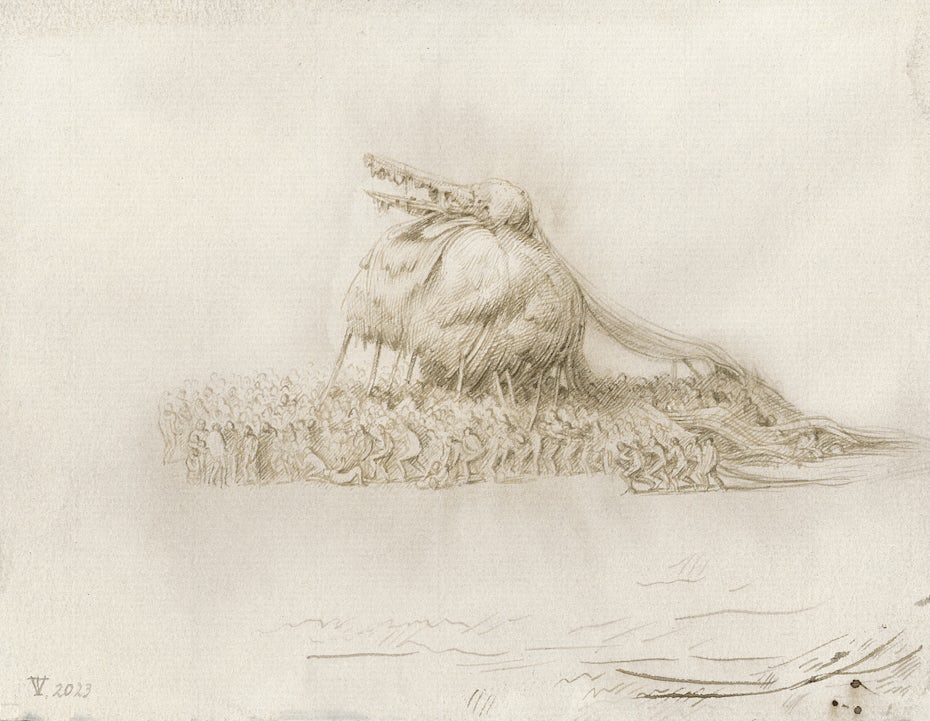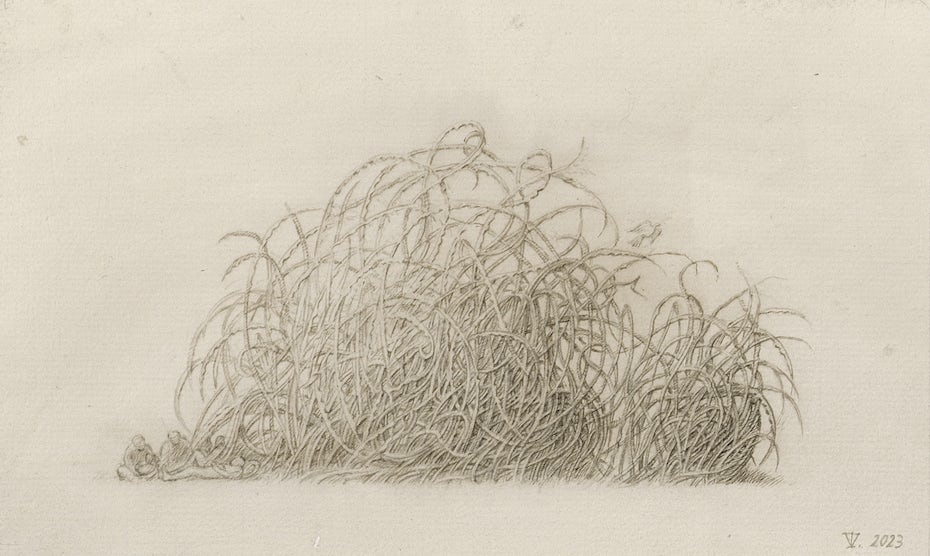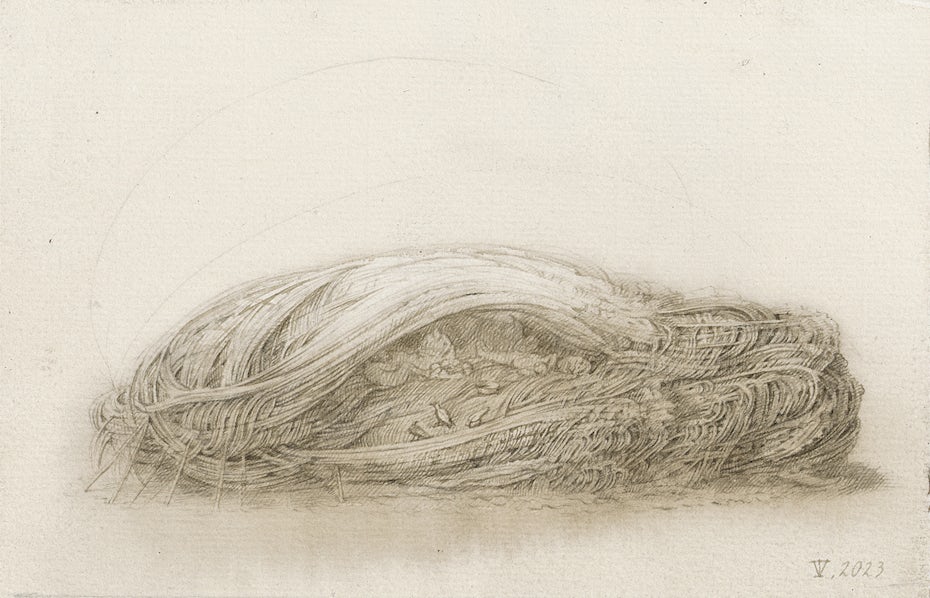Habitus
Tinus Vermeersch & Mona Ardeleanu
Brussels
12.09 - 26.10.2024
Works
Installation views
Press release
We are delighted to invite you to the exhibition ‘Habitus’ by Mona Ardeleanu and Tinus Vermeersch at our gallery in Brussels.
When Mona Ardeleanu (b. 1984 in Lörrach, Germany) first began her studies, she had a background in comics and graffiti and had never worked on canvas. During her studies, she tried out everything that could be done pictorially. She also painted figuratively, but above all she was searching for something, something that she could manipulate. Fabric is very obliging: it doesn’t follow the laws of physics, instead it can follow the image. She can shape it to suit herself, the object, the thing.
Priming takes a long time, because she wants a neutral pictorial base without space, time, or physics. The aim is an undefined space in which the object is able to exist alone. Then she starts with grey and white, and the things develop from there. The images are created on the canvas, so she always works on several simultaneously. They influence each other, and one arises from the other; that’s why you can always recognise groups of works.
Ardeleanu refuses to work from a direct model because she knows that her works have an added value to them when the things arise spontaneously rather than being influenced from the outside.
The objects hover in neutral space because they are not static. They couldn’t function in our reality. If Mona were to build them, she would have to hang, position and support them. She used to illuminate them and place them in an aura. But she no longer defines a point of light: but instead she lets the light emanate from the object itself. So it’s logical to say that the background is a neutral pictorial space. However, more works are being created in which the background is integrated.
Titles are very important: they describes what the work is: In this case, they’re a thing, that doesn’t exist. The titles are also descriptive. They continue the pictorial creation on a linguistic level.
Tinus Vermeersch is an artist who creates a private mythology with his oeuvre. In the ‘Habitus’ exhibition at Hopstreet Gallery, Tinus Vermeersch (b. 1976 in Kortrijk, Belgium) unlocks his own surreal universe in recently created sculptures. We find traces of human presence in this private universe brimming with enticing contrariness. Some works are in bronze, and others are in plaster and ceramic. He does not title the works so as not to impose possible interpretations on the viewer, to leave the readability intact.
The core of his work originates in anthropology, in the ancient animistic and shamanistic traditions of primitive societies, and more recently in heraldry and medallions. His technique is grafted on a solid knowledge of materials; his world is beyond comparison. Vermeersch’s oeuvre is populated by a micro-world of hybrid creatures that have sprung from his drawing oeuvre.
The ‘Habitus’ exhibition exclusively features spatial work by Tinus Vermeersch. In the first series, he continues the visual language of his drawings in his sculptures. The work often shows intertwined ‘figures’ and is very detailed and legible. But as is often the case with Vermeersch, recognisability turns into alienation. There is usually a (solidified) movement in them that invites the viewer to unravel the secrets woven into the sculptures, which is doomed to fail given the inherent secrecy of the sculptures. These works convey a sense of security and enclosure.
Until a few years ago, the relationship between his painting and sculptural work was inseparable. The visual language consisted of one image literally merging into the other. For the past few years, he has also been creating sculptures that evoke a certain functionality. They are sculptures that could claim a place in (medieval) rituals and customs. Tinus Vermeersch’s fascination with heraldry and emblems also put him on the track of medallions, attributes that he extracts from reality and strips down to their essence in order to penetrate to the core (of the object). He likes combining this kind of work with natural materials such as jute. Tinus Vermeersch does not want to hide his interest in archaeology, and in his studio, I also saw a portrait head by his hand that recalls classical antiquity.
These are images that capture our imagination and are characteristic of the artist’s oeuvre, namely a sophisticated mix of technical skills and supreme concentration against an art-historical background.
Text Tinus Vermeersch by Patrick Ronse







































